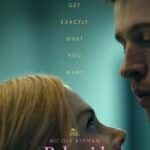
Miracles From Heaven
The Texas Beam family (mother, father and two daughters) has just been indebted to expand the estate in which her father carries out her veterinary profession when her second-born Annabel (10 years old) is hit by a rare illness. This is an affect to the digestive system that prevents the transformation of foods. The prognosis is infamous and in any case the pains the child suffers are difficult to withstand. The family is very religious but her mother, Christy, does not endorse the test and departs from the faith. Until an unexplained event occurs in medical science.
When you are faced with a film that is based on what really happened and the theme is the miracle, the first temptation is to be wary of thinking that it is an operation that has the main purpose of addressing those who believe in Manifestations not attributable to rational observations, only and exclusively to what this type of spectator likes to hear. This is not the case with this movie, which, in the queue titles, gives testimony to adherence to reality the real protagonists.
Because on this occasion, we are not confined to telling the miraculous outcome but addressing the problems a family (to whatever latitude it faces) has to face when suddenly faces the serious illness of a Component while pouring in unproblematic economic conditions. Patricia Riggen, whom the Italian public knows about the interesting La moma moon, shows with great detail the progressive focus of her mother on Annabel’s pain and her struggle to make a Mexican specialist practicing Boston can visit her despite a Waiting list of nine months.
As far as the community of believers is concerned, the screenplay does not shirk from showing the grungy ignorance of some of the so-called faithful who feel that the incurability of the child is due to the sins committed by her or her parents by reintroducing the evangelical allegations to the blind born. So when you come to the extraordinary event, a consequence of a new accident happened to Ann, you have not neglected to tell a context, known to many, with accents without the rhetoric that usually accompanies films on the sick but rich in educated ideas From reality. The miracle itself is contextualized in a mother’s reading that expands the meaning of the word by suggesting a vision that can sink its roots in everyday life.








